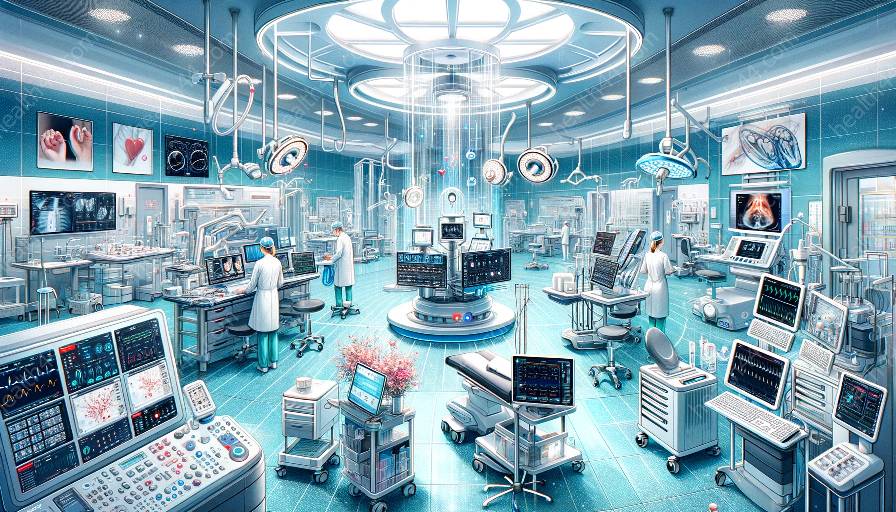Biomedical engineering has paved the way for the development of bioengineered medical devices that hold immense potential in revolutionizing healthcare. However, with the innovative advancements come ethical and regulatory considerations that must be carefully addressed to ensure the safety, efficacy, and ethical use of these devices.
Understanding Bioengineered Medical Devices
Bioengineered medical devices are the products of sophisticated cross-disciplinary collaboration between bioengineering and medical sciences. They encompass a wide range of technologies, including prosthetics, implants, diagnostic equipment, and therapeutic devices. These devices are designed to interact with biological systems, and their development requires a deep understanding of both biological and engineering principles.
The Ethical Imperatives
When delving into the realm of bioengineered medical devices, it is imperative to consider the ethical implications of their development, use, and impact on society. Ethical considerations encompass a range of critical issues, including patient autonomy, beneficence, non-maleficence, and justice. As these devices can directly impact the quality of life and well-being of patients, ethical decision-making is paramount in their design, testing, and deployment.
1. Patient Autonomy: Bioengineered medical devices have the potential to influence a patient's autonomy, especially in cases where the device regulates or monitors physiological functions. Respecting the autonomy of individuals in choosing their medical interventions is a fundamental ethical principle.
2. Beneficence and Non-maleficence: The principles of beneficence (doing good) and non-maleficence (doing no harm) underpin the ethical development of bioengineered medical devices. These devices should aim to improve patient outcomes without causing harm or unnecessary suffering.
3. Justice: Ensuring equitable access to bioengineered medical devices is essential in promoting justice within healthcare systems. Ethical considerations extend to affordability, access, and the equitable distribution of these innovative technologies.
Regulatory Framework and Oversight
The development and commercialization of bioengineered medical devices are subject to stringent regulatory oversight to ensure their safety, efficacy, and ethical use. Regulatory agencies, such as the U.S. Food and Drug Administration (FDA), the European Medicines Agency (EMA), and other international bodies, play a pivotal role in evaluating and approving these devices for market entry.
Regulatory Pathways:
The regulatory pathways for bioengineered medical devices vary depending on the device's classification, intended use, and potential risk to patients. The classification of devices ranges from low-risk (Class I) to high-risk (Class III), with each class being subject to specific regulatory requirements.
Preclinical Testing: Before a bioengineered medical device can be subjected to clinical trials, extensive preclinical testing is conducted to assess its safety and performance. This phase involves in vitro and in vivo studies to understand the device's interaction with biological systems.
Clinical Trials: Clinical trials are a critical stage in the regulatory pathway, where the safety and efficacy of bioengineered medical devices are evaluated in human subjects. These trials provide essential data for regulatory decision-making and the determination of the device's clinical benefits.
Post-Market Surveillance:
Even after a bioengineered medical device has been approved for market entry, post-market surveillance is essential for monitoring its performance and identifying any potential adverse effects. This ongoing surveillance contributes to the continuous evaluation of the device's safety and effectiveness in real-world clinical settings.
Challenges and Future Directions
The intersection of bioengineering and medical devices introduces several challenges that must be addressed to pave the way for continued innovation and ethical practice.
Complexity of Biological Systems: Understanding the intricate interplay between bioengineered devices and complex biological systems poses a significant challenge. Devices must be designed to integrate seamlessly with the body's physiological processes while minimizing the risk of immune rejection or adverse reactions.
Interdisciplinary Collaboration: Fostering effective collaboration between bioengineers, medical professionals, ethicists, and regulatory experts is essential in addressing the multifaceted challenges posed by bioengineered medical devices. Building a cohesive interdisciplinary framework can streamline the ethical and regulatory decision-making processes.
Ethical Adoption and Access: Ensuring that bioengineered medical devices are ethically adopted and accessible to diverse patient populations presents a challenge in promoting equitable healthcare delivery. Addressing disparities and access barriers is crucial in realizing the full potential of these innovative technologies.
Conclusion
The ethical and regulatory aspects of bioengineered medical devices are pivotal in guiding the responsible development, deployment, and utilization of these transformative technologies. By upholding ethical principles and adhering to rigorous regulatory oversight, the bioengineering community can contribute to the advancement of safe, effective, and ethically sound medical devices that benefit patients worldwide.


